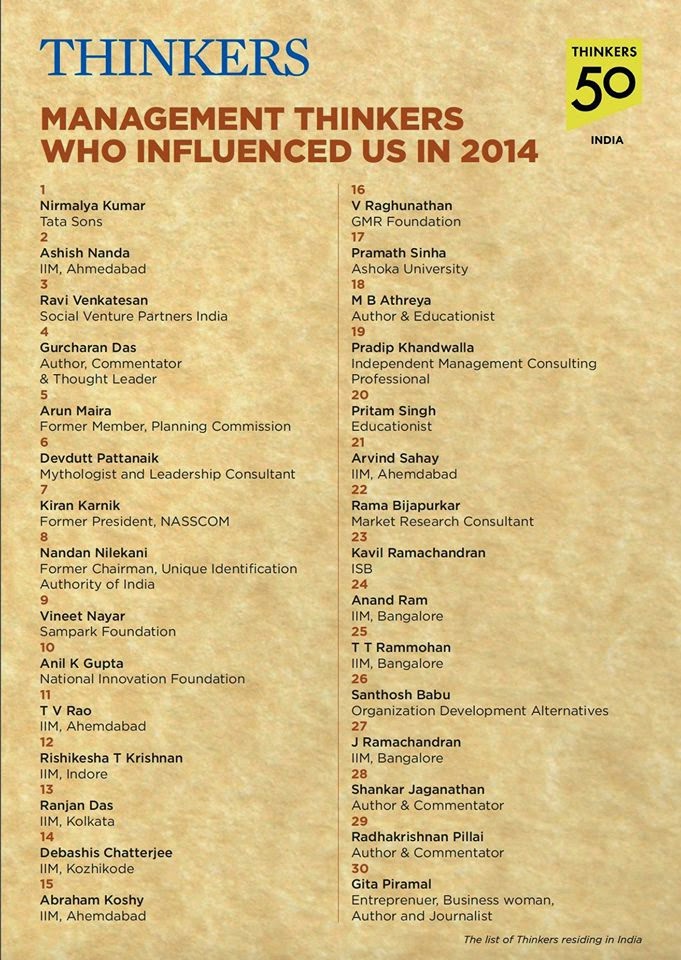Containerized shipping seems like a most mundane and routine activity. But Marc Levinson makes the saga of the adoption and diffusion of this game-changing innovation a memorable experience in The Box (Princeton University Press, 2006).
While it’s extremely difficult to estimate the exact impact of containerization, Levinson convincingly establishes that it revolutionized the carriage of freight and much more. As he pithily puts it, as a result of containerization, “transportation has become so efficient that for many purposes, freight costs do not much effect economic decisions” (p. 8).
In The Box, Levinson underlines different facets of the innovation process in an eminently reader-friendly way. Here are my key takeaways from the book:
Ideas take time to germinate, as Steven Johnson explained in Where Good Ideas Come From. The first containers were in use as far back as the late 19th century. But it wasn’t until the mid 1950s that the container got effectively commercialized. And this happened because of the concatenation of two important events: the large inefficiency of port operations that led to significant costs of transportation, and the determination of Malcom Maclean, serial entrepreneur and intrepid innovator, to find ways of reducing costs and injecting efficiency into the shipping system.
Execution of the idea is key – this involves overcoming a variety of barriers. Maclean identified an outstanding design engineer Keith Tantlinger who could design containers that could withstand transportation and be stacked one upon the other. He re-designed ships so that they could carry containers efficiently without wasting space. He created new port infrastructure (at hitherto under-utilized ports) specially suited to the loading and unloading of containers. He overcame the objections of unions and regulatory barriers. He took big risks by offering to demonstrate the utility of containerization to the US armed forces in the middle of the Vietnam War (incidentally, a highly successful demonstration that gave him exclusive access to military cargo for the rest of the war).
Diffusion of an innovation depends on social, economical and political factors. Powerful dock unions were against it, though in retrospect it is now clear that they under-estimated the changes that containerization would bring about. Cartelization of shipping (through “conferences” of shipping companies) delayed the diffusion of this innovation because it provided a price umbrella for inefficient shipping modes. Standardization played a role (though it happened 7-8 years after the container was first in use on a commercial scale) – in its absence, there would have been no interchangeable use of containers across players and transportation modes, and purpose of containerization would have been defeated.
External events play a major role in the diffusion of innovation. This is evident in the pace of diffusion of containerization. The Vietnam War graphically demonstrated the utility of containerized shipping and got the strong endorsement of the US military. The first oil shock (1973-74) depressed demand for world trade and put a spoke in the wheel of rapid containerization – players who had invested in high speed ships that consumed a lot of fuel were at a serious disadvantage. Equally, subsequent stabilization of fuel prices made those who had invested in slower ships lose out.
The full impact of an innovation can take many years to be apparent. Initially, the benefits of containers were not passed on fully to customers. Containers also did not immediately displace traditional methods of shipping because of regulation and cartelization (subsidies for ships carrying the national flag; cartels/conferences kept prices high). But ultimately containerization changed the world in myriad ways. It started by reducing loading, unloading and trans-shipment time at ports dramatically. It made port activities much less labour-intensive. It reduced theft and damage. Over the longer term, it reduced transportation and logistics costs, and enhanced efficiency. Looking back, it played a major role in helping Japan, Korea and later China become major exporters. It facilitated disaggregation of industries, and helped specialization leading to the global value chains that are commonplace today.
Innovation can have a profound impact on economic geography. Ports that did not (or could not) embrace containerization lost out. Social communities in the periphery of ports got uprooted. Many industries located near ports for logistics reasons no longer had to do so. New ports emerged, and containerization sparked off competition between port cities as they vied to set up better infrastructure. The ultimate impact of containerization has been in globalization and the growth of world trade.
First-movers don’t necessarily dominate unless they manage to create some barriers to entry/imitation or create lock-in effects. Particularly if technology is changing fast, a late mover who understands the changing industry dynamics better may have an advantage over early movers. Initially investments in containerization for shippers were not huge – companies modified existing ships of World War II vintage that had been acquired at low cost, so no major capex was involved. Later, an intense competitive battle to acquire large ships with huge container capacities involving major capex ensued. This resulted in price wars as shipping companies were desperate to fill capacity. Many of the early movers lost out, and the ultimate winners were lines like Maersk that focused on efficiency and logistics, etc. (reminds me of the airline industry!).
While it’s extremely difficult to estimate the exact impact of containerization, Levinson convincingly establishes that it revolutionized the carriage of freight and much more. As he pithily puts it, as a result of containerization, “transportation has become so efficient that for many purposes, freight costs do not much effect economic decisions” (p. 8).
In The Box, Levinson underlines different facets of the innovation process in an eminently reader-friendly way. Here are my key takeaways from the book:
Ideas take time to germinate, as Steven Johnson explained in Where Good Ideas Come From. The first containers were in use as far back as the late 19th century. But it wasn’t until the mid 1950s that the container got effectively commercialized. And this happened because of the concatenation of two important events: the large inefficiency of port operations that led to significant costs of transportation, and the determination of Malcom Maclean, serial entrepreneur and intrepid innovator, to find ways of reducing costs and injecting efficiency into the shipping system.
Execution of the idea is key – this involves overcoming a variety of barriers. Maclean identified an outstanding design engineer Keith Tantlinger who could design containers that could withstand transportation and be stacked one upon the other. He re-designed ships so that they could carry containers efficiently without wasting space. He created new port infrastructure (at hitherto under-utilized ports) specially suited to the loading and unloading of containers. He overcame the objections of unions and regulatory barriers. He took big risks by offering to demonstrate the utility of containerization to the US armed forces in the middle of the Vietnam War (incidentally, a highly successful demonstration that gave him exclusive access to military cargo for the rest of the war).
Diffusion of an innovation depends on social, economical and political factors. Powerful dock unions were against it, though in retrospect it is now clear that they under-estimated the changes that containerization would bring about. Cartelization of shipping (through “conferences” of shipping companies) delayed the diffusion of this innovation because it provided a price umbrella for inefficient shipping modes. Standardization played a role (though it happened 7-8 years after the container was first in use on a commercial scale) – in its absence, there would have been no interchangeable use of containers across players and transportation modes, and purpose of containerization would have been defeated.
External events play a major role in the diffusion of innovation. This is evident in the pace of diffusion of containerization. The Vietnam War graphically demonstrated the utility of containerized shipping and got the strong endorsement of the US military. The first oil shock (1973-74) depressed demand for world trade and put a spoke in the wheel of rapid containerization – players who had invested in high speed ships that consumed a lot of fuel were at a serious disadvantage. Equally, subsequent stabilization of fuel prices made those who had invested in slower ships lose out.
The full impact of an innovation can take many years to be apparent. Initially, the benefits of containers were not passed on fully to customers. Containers also did not immediately displace traditional methods of shipping because of regulation and cartelization (subsidies for ships carrying the national flag; cartels/conferences kept prices high). But ultimately containerization changed the world in myriad ways. It started by reducing loading, unloading and trans-shipment time at ports dramatically. It made port activities much less labour-intensive. It reduced theft and damage. Over the longer term, it reduced transportation and logistics costs, and enhanced efficiency. Looking back, it played a major role in helping Japan, Korea and later China become major exporters. It facilitated disaggregation of industries, and helped specialization leading to the global value chains that are commonplace today.
Innovation can have a profound impact on economic geography. Ports that did not (or could not) embrace containerization lost out. Social communities in the periphery of ports got uprooted. Many industries located near ports for logistics reasons no longer had to do so. New ports emerged, and containerization sparked off competition between port cities as they vied to set up better infrastructure. The ultimate impact of containerization has been in globalization and the growth of world trade.
First-movers don’t necessarily dominate unless they manage to create some barriers to entry/imitation or create lock-in effects. Particularly if technology is changing fast, a late mover who understands the changing industry dynamics better may have an advantage over early movers. Initially investments in containerization for shippers were not huge – companies modified existing ships of World War II vintage that had been acquired at low cost, so no major capex was involved. Later, an intense competitive battle to acquire large ships with huge container capacities involving major capex ensued. This resulted in price wars as shipping companies were desperate to fill capacity. Many of the early movers lost out, and the ultimate winners were lines like Maersk that focused on efficiency and logistics, etc. (reminds me of the airline industry!).



















No comments:
Post a Comment